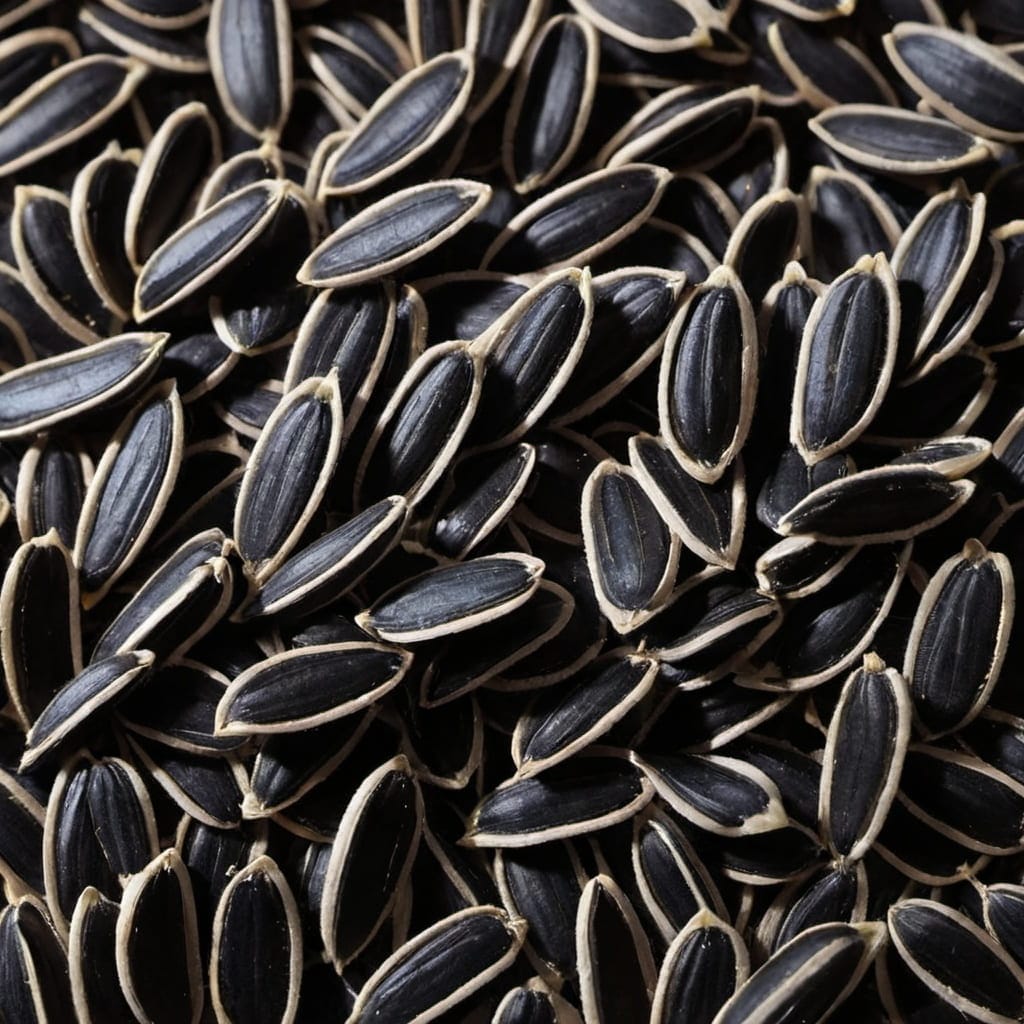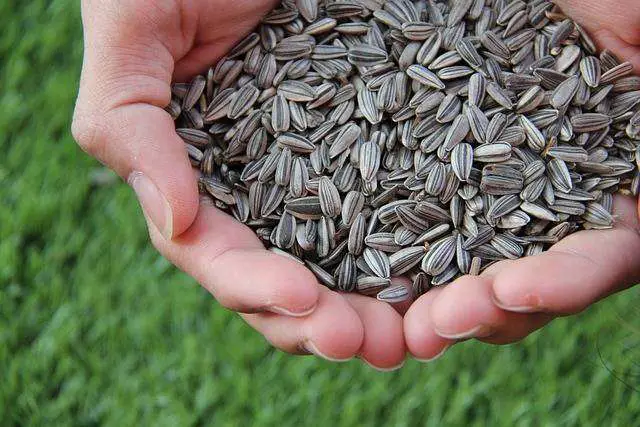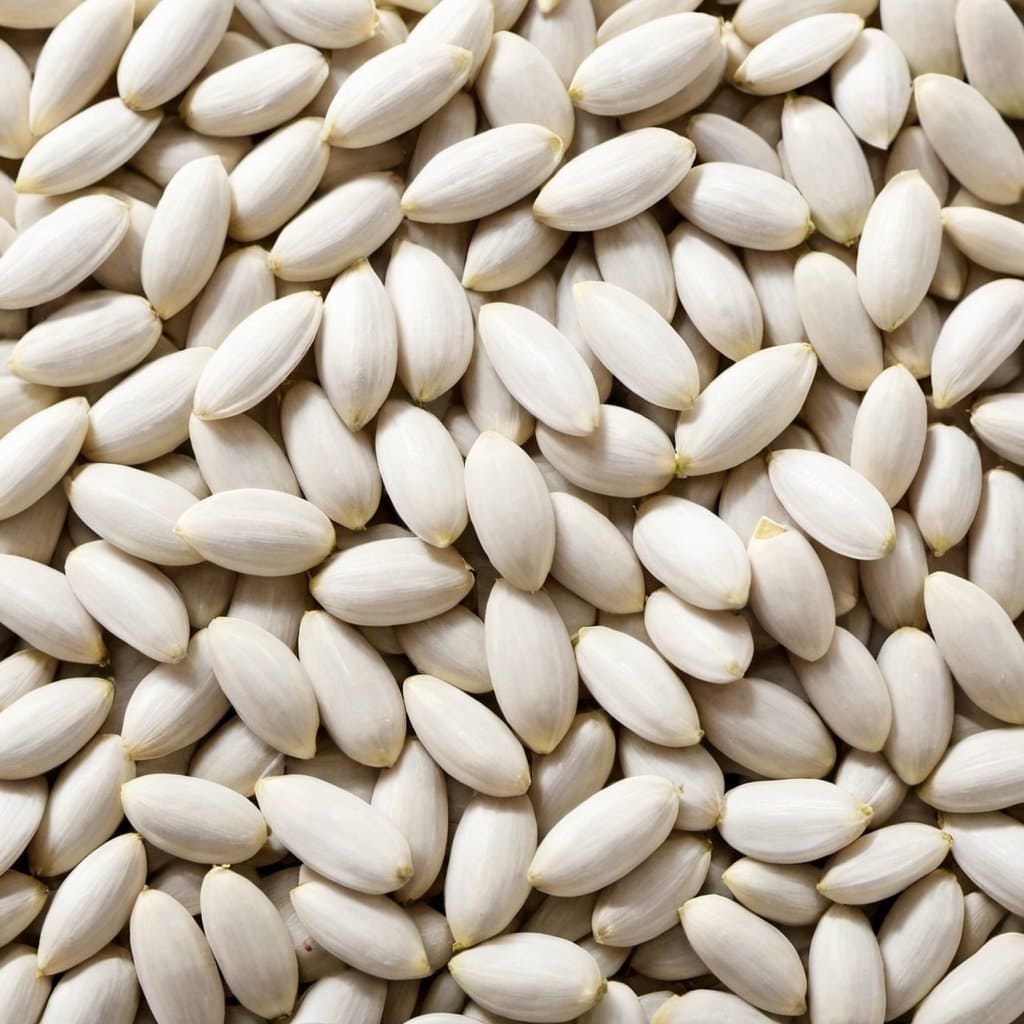Introduction
Sunflowers are one of nature’s most vibrant and captivating flowers, known for their large, sunny blooms and striking appearance. They are a favorite among gardeners and farmers alike, not just for their beauty but also for the seeds they produce. However, if you’ve ever harvested sunflower seeds and found them to be white instead of the usual dark color, you might be wondering what went wrong. Let’s discuss “Why Are My Sunflower Seeds White?” in detail in this article.
Understanding Sunflower Seeds
Anatomy of a Sunflower Seed
Sunflower seeds come from the large flower heads of the sunflower plant. Each seed is encased in a hard shell, typically black and white striped, which protects the seed inside. The seed itself is usually a grayish color.

The Shell
The shell, also known as the hull, is the hard outer covering of the sunflower seed. It’s what you see when you look at the seed. The shell is typically black and white striped or solid black, depending on the sunflower variety. This tough layer protects the inner parts of the seed from damage and pests.
The Seed Inside
Inside the shell is the actual seed, which we often eat. This part is called the kernel. When you crack open the shell, the kernel is what you find inside.
Here are the main parts of the kernel:
- Seed Coat: This is a thin, papery layer that surrounds the kernel. It’s the first layer you’ll see when you remove the shell. The seed coat helps protect the kernel and keeps it from drying out.
- Cotyledons: These are the main part of the kernel. Cotyledons are the “leaves” of the seed that contain stored nutrients. When the seed germinates (starts to grow), these nutrients help feed the young plant until it can make its own food through photosynthesis.
- Embryo: The embryo is the tiny plant inside the seed that will eventually grow into a sunflower. It’s nestled between the cotyledons. The embryo has all the basic parts of a plant in miniature form, including a tiny root (called the radicle) and a tiny shoot (called the plumule).
To summarize, the sunflower seed has a hard outer shell that protects the inner kernel. The kernel itself contains the seed coat, cotyledons, and the embryo, all of which play crucial roles in the development of a new sunflower plant.
Typical Colors of Sunflower Seeds
Sunflower seeds can come in a few different colors, and here’s an easy way to understand them:
Black
Many sunflower seeds are solid black. These are often used to produce sunflower oil or as bird feed. The black shells are usually thinner, making them easier to process for oil extraction.

Black and White Striped
Another common color pattern is black and white stripes. These are the seeds you often find in snacks or sold as food for humans. The stripes can be thick or thin, giving the seeds a distinct look.

Grayish
When you remove the shell, the seed inside (the kernel) is usually a grayish color. This is the part we eat, and it’s rich in nutrients like healthy fats and protein.
So, sunflower seeds are typically black or black and white striped on the outside, with a grayish kernel inside. These colors help identify different types of sunflower seeds and their uses.
Reasons for White Sunflower Seeds
1.Genetic Factors
The color of sunflower seeds can vary due to genetic differences. Some sunflower varieties naturally produce lighter seeds. Hybrid varieties, bred for specific traits, might also exhibit different seed colors, including white.
Variations in Sunflower Species
Different species of sunflowers can produce seeds of various colors. For example, some ornamental sunflowers are bred for aesthetic purposes and might produce white seeds.
Hybrid Sunflower Varieties
Hybrid sunflowers, designed for specific traits like disease resistance or increased yield, can sometimes produce seeds that differ in color from traditional varieties.
2.Environmental Influences
Environmental factors play a crucial role in the development of sunflower seeds. Soil conditions, weather patterns, and even pest infestations can affect the color and quality of the seeds.
Soil Conditions
Soil composition and quality significantly impact sunflower growth. Nutrient-deficient soil can lead to underdeveloped seeds, which might be lighter in color.
Weather and Climate
Sunflowers thrive in sunny, warm climates. Poor weather conditions, such as excessive rain or lack of sunlight, can stress the plants and affect seed development.
Pests and Diseases
Pests like aphids and diseases such as downy mildew can weaken sunflower plants, leading to poor seed quality and unusual seed coloration.

3.Harvesting Time
The timing of the harvest is critical. If sunflower seeds are harvested too early, they might not have developed their full color. Conversely, if harvested too late, they might lose some of their pigmentation.
Importance of Timing
Harvest timing is essential to ensure seeds reach full maturity. Early harvesting can result in white or light-colored seeds due to incomplete pigment formation.
Early vs. Late Harvesting
Early harvesting can cause seeds to be underdeveloped, while late harvesting might lead to seed spoilage. Finding the right balance is crucial for optimal seed quality.
4.Seed Maturity
Immature seeds are often lighter in color. As seeds mature, they accumulate pigments and nutrients, darkening over time. White seeds might indicate that they haven’t fully matured.
Recognizing Mature Seeds
Mature sunflower seeds are usually dark and plump. Checking for these characteristics can help determine the right time to harvest.
Effects of Immaturity on Seed Color
Immature seeds lack the full range of pigments and nutrients, often resulting in a lighter color. Ensuring seeds have enough time to mature can prevent this issue.
Conclusion
In summary, white sunflower seeds can result from a variety of factors, including genetics, environmental conditions, and harvesting practices. By understanding these factors and optimizing your growing methods, you can increase the likelihood of producing high-quality, dark seeds. Sunflowers are a delightful and rewarding plant to grow, offering both aesthetic beauty and nutritional benefits.
FAQs
1.Can white sunflower seeds still germinate?
Yes, white sunflower seeds can still germinate, but their germination rates might be lower compared to fully matured seeds.
2.Are white sunflower seeds safe to eat?
White sunflower seeds are generally safe to eat, but they may not have the same nutritional value as mature seeds.
3.How can I prevent my sunflower seeds from turning white?
To prevent white seeds, ensure optimal growing conditions, select the right sunflower varieties, and harvest at the appropriate time.
4.Why Are My Sunflower Seeds White?
Sunflower seeds can turn white due to lack of sunlight, nutrient deficiencies, improper watering, pests, diseases, or genetic factors. Ensure proper care to maintain seed color.
5.Do different sunflower species produce different colored seeds?
Yes, different sunflower species and hybrid varieties can produce seeds of varying colors, including white.
6.What are the best conditions for growing sunflowers?
Sunflowers thrive in well-drained soil with plenty of sunlight. Regular watering and pest control are also essential for healthy growth.
7. Can I plant white sunflower seeds?
Yes, you can plant white sunflower seeds. They will grow into sunflower plants, though the resulting seeds may vary in color depending on genetics and growing conditions.
8. Are White Sunflower Seeds Good For Birds?
Yes, white sunflower seeds are good for birds. They provide essential nutrients and energy. Birds generally enjoy them as much as the darker seeds.
9. What is the difference between white and black sunflower seeds?
White sunflower seeds often have thinner shells and may be less oily. Black sunflower seeds, also called oilseeds, have thicker shells and higher oil content, making them popular for bird feed and oil production.


1 thought on “Why Are My Sunflower Seeds White? Expert and Improve Answers in 2024”